
Detail from the Annunciation (1500) by Pinturicchio
Cappella Bella, Santa Maria Maggiore
The medieval walls were built in ca. 1360 to enclose new suburbs in an arc to the north of the town. In the south, the line ran close to that of the Roman circuit. Pope Paul III largely destroyed these walls in 1534, but its gates survive.
Portonaccio
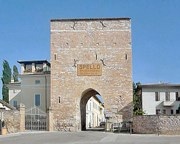
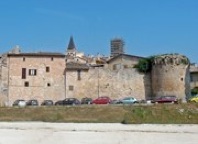
Portonaccio announces itself as the entrance to the Roman colony, “Splendissima Colonia Julia”, despite the fact that it was built in the 14th century. Roman blocks have been re-used at its base. It now stands in splendid isolaion. However, it can be seen to the left in the detail of the fresco (1500) above as an integral part of the medieval walls. It is also clear from the freco that it has lost its ornate upper part.
Excavations that were caried out here in 1977 discovered part of a necropolis that was in use from the 3rd century BC and extended towards the railway station. Grave goods from the necropolis, together with a fibula (7th century BC) that was also found nearby, are exhbited in the he Civic Archeological Collection in Palazzo Bianconi.
Other Medieval Gates
The other medieval gates of Spello are (proceeding anti-clockwise from the south east:
-
✴Porta Chiusa, which is so-called because it was blocked up for a considerable period;
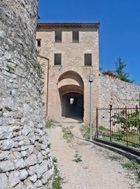
-
✴Porta del Prato, which has traces of a fresco (16th century) in its lunette on the inner surface, and which leads to the fields east of Spello that were centuriated when the colony was formed;
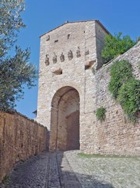
-
✴Porta Montanara (18th century), which stands beside vestiges of the medieval gate and a tower from the old Cassero del Pianello that was incorporated into the church of Santa Barbara;
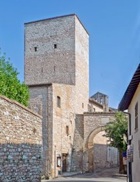
-
✴Porta Fontevecchia, which has:
-
•vestiges of the wall to the right (looking from the outside) that connected it to Torre Santa Margherita; and
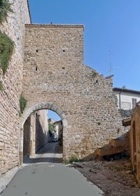
-
•steps to the left (looking from the inside) that lead to the upper storey; and
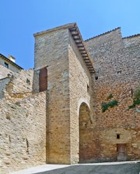
-
✴Porta Sant’ Angelo, which is near the Roman Porta Venere. This gate is named for a church that was documented in the 14th century but subsequently demolished.
-
•The inscription on the outside gives the date 1350.
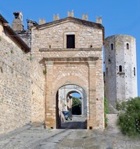
-
•The inscription on the inside records the restoration of the upper part of the gate in 1850.
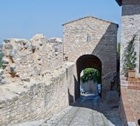
-
The medieval wall runs from this gate to Porta Venere, after which the medieval and Roman circuits coincide.






